All
Innovation Via Collaboration

Photos by Barbara Chagnon
Sometimes energy industry innovation takes the form of a new invention — a self-modulating, multi-fuel burner, for example. Other times, it’s an alternate application of an existing methodology, like using dilution air venting with condensing boilers. However, in some cases, it’s the business operation itself that embodies the spirit and indeed, the very definition, of innovation.
For years, propane retailers and consumers in New England have grappled with the same issues: price spikes caused by supply constraints and a shaky infrastructure. This situation can arise in almost any extreme weather event, to the extent that trade associations have actually incorporated warnings about it into materials seen by dealers and homeowners. It’s essentially part of the New England propane paradigm.
Last year, two family-owned mainstays of the deliverable fuels industry introduced a new solution to this ongoing problem by doing something that is in a sense both at odds with, and at the heart of, friendly dealer competition — they came together to open a shared bulk storage facility.
Setting the Stage
On a brisk autumn day in October 2017, business leaders from Townsend Energy and DF Richardgathered at the companies’ collective propane storage plant, a 158,559-square foot facility in Epping, New Hampshire, with four tanks capable of holding a combined capacity of 180,000 gallons.
It was around the one-year anniversary of the plant’s opening. In attendance were DF Richard CEO Rick Card and COO Ryan Jackson and Townsend Energy CEO Jim Townsend, President Mark Townsend, and Managing Partner Don Chagnon, all key players in the facility’s planning and development.
The idea for the plant was first broached in casual discussion at an industry convention in late 2015, “really an informal conversation between all of us about storage facilities,” Card recalls. “We had been looking for a site in the Epping area for several months, when we found out Townsend had been looking there too.”
What might’ve been an awkward situation for some was instead a natural pairing; no doubt due in part to the companies’ mutual interests and strikingly similar histories.
Established in 1931, Townsend Energy has expanded widely over the decades, acquiring 20-plus companies, most of which were heating oil retailers. The company entered the propane business in the early 2000s and has continued growing since.
Established in 1932, DF Richard got into the propane game in the mid-1950s, relatively early for a family-owned heating oil company, but has seen that side of the business grow tremendously over the last two decades.
“I’ve considered the Richard family good friends for over 25 years,” says Jim Townsend. “That’s where any successful partnership starts — there must be a high level of trust and respect between the competitors.”
Card agrees: “We knew each other’s companies and reputations, that’s a large part of why we even had this conversation,” he says. “It’s not a discussion you have with every competitor or fellow dealer. We did business very similarly and trusted each other, so that was the basis.”
The CEOs got the ball rolling, though both agree it was Jackson and Chagnon who “ran with the ball on the execution side,” as Jim Townsend puts it.
Without Precedent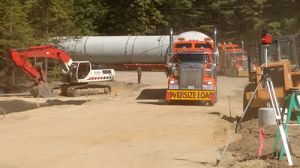
Growth can be great for business so long as it’s sustainable, but historically, one of the biggest problems for fuel dealers in the Northeast has been an inability to secure the amount of supply required to meet increasing demand. “Propane supply in our region has always been a concern,”
admits
Chagnon. “With propane demand still growing at a significant rate, both companies realized that more days-on-hand storage was needed.”
And that is exactly what the new facility has to offer. Not only does it 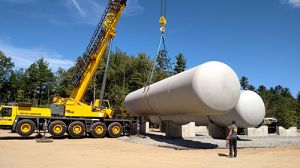
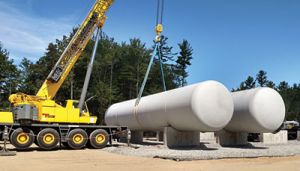 house four 45,000-gallon tanks, but there’s room to put in several more if needed, Chagnon notes. Additionally, “the tanks are set up so that DF Richard and Townsend Energy use two apiece, but if necessary, we can open up and load out of all four as needed,” he says.
house four 45,000-gallon tanks, but there’s room to put in several more if needed, Chagnon notes. Additionally, “the tanks are set up so that DF Richard and Townsend Energy use two apiece, but if necessary, we can open up and load out of all four as needed,” he says.
“That’s what’s most unique here,” says Card. “What we have is two separate companies working together to jointly build one facility and then utilizing it as if it were a single company’s facility.”
One might assume that such an unprecedented collaboration would take many years to materialize, but in actuality, the process was relatively seamless.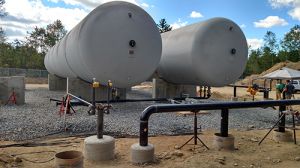
“It was about 11 months from the time of the first meeting until the plant was up and running,” says Jackson. “We had the advantage that we started with the town early on,” he adds. “Our planning board meeting went very quickly, without any issues, because we made sure to sit down beforehand so they knew what we were coming with.”
“The fact of the matter is that both of our companies have done this before,” says Chagnon. “Both companies have lots of experience in the permitting process with these kinds of projects.”
While that’s true, neither company had previously worked with a competitor to open a shared facility (after all, who has?), and that’s not all that was different this time.
“One thing that was new for us was having an automated gate with additional security cameras so the site is fully protected all the time,” says Jackson. “This facility also uses 100-percent LED lighting, which means much lower power consumption. The other thing that we hadn’t used in our other facilities was variable frequency drives, which put a lot less wear and tear on the plant’s motors.”
And the gadgetry list goes on: “Another thing we’ve done is fully automated the methanol and propane levels,” Jackson adds. “We get an email every day stating the levels, so we can keep an eye on the tanks and plan our loads.”
“The plant contained the most up-to-date piping, valving and safety equipment available,” concludes Chagnon. “If it was out on the market, it was in this facility — that’s for sure.”
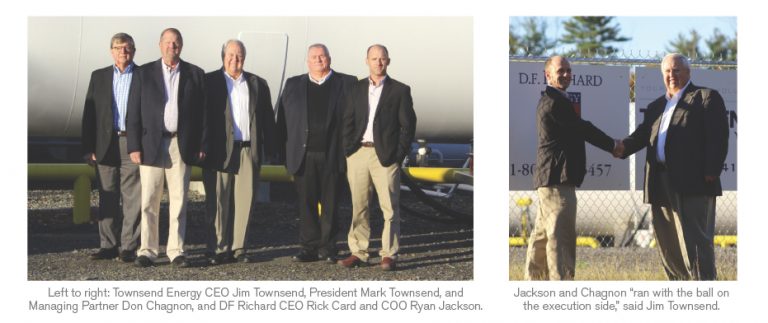
Why? Why Not?!
Why so many bells and whistles? At the end of the day, it’s all about securing supply, which according to everyone involved, makes for a more efficient operation. “Our customers want to be sure product is available when they need it,” says Chagnon. “Our investment in bulk storage gives them that comfort level and gives us the confidence to ensure we have additional storage on hand even in tight times.”
Positioned along the perimeter of both companies’ service areas, the site’s central location goes a long way toward establishing the kind of reliable infrastructure that’s long been missing from this part of the country. And that comes with some added advantages.
“We look at it two ways,” explains Jackson. “It improves logistics, as our trucks don’t have to go as far and can burn less fuel, but it also makes the roads a lot safer, as we don’t have to drive HAZMAT vehicles as many miles each day to move back and forth between areas.”
Chagnon says that the new automated facility makes Townsend Energy’s drivers’ jobs easier, as they can now “make more stops in fewer hours.” Still, the news that their company was teaming up with a competitor came as a surprise to many employees.
“I had one of our propane drivers come up to me and ask, ‘Why did we do this?’” recalls Mark Townsend. “I explained how it was for the good of our customers and our companies, and he said, ‘You know, Mark, that’s really cool! That’s why we are the company we are.’”
“We got the same type of questions from competitors,” adds Card, “and we said why would we not do something like this? The industry as a whole probably needs to do more of this for our own sake, as well as for our customers’ sake. We owe it to them to be as efficient as possible.”
“There is nothing inexpensive about building a facility like this,” Chagnon reasons. “Land is expensive. Moving dirt is expensive. So, when you can find companies that are as likeminded and full of good ideas as Townsend and DF Richard, companies that really put thought into their customers and employees, it only makes sense to do something like this. If you can get two competitors to put aside their differences and realize that this is for their mutual benefit, it’s a no-brainer.”
“Innovation is such an important component of any successful business,” notes Jim Townsend. “We see it all the time with the big tech firms, but in a challenging, mature industry such as oil and propane, I think it’s even more important to look for innovative solutions, because that’s where you find successful ventures.”
Related Posts
 Why Quality Matters in Your Biofuel Blends
Why Quality Matters in Your Biofuel Blends
Posted on June 25, 2025
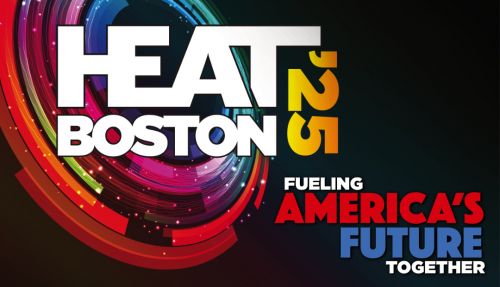 HEAT Show Gears Up
HEAT Show Gears Up
Posted on June 25, 2025
 What’s Next in Boiler Technology
What’s Next in Boiler Technology
Posted on June 25, 2025
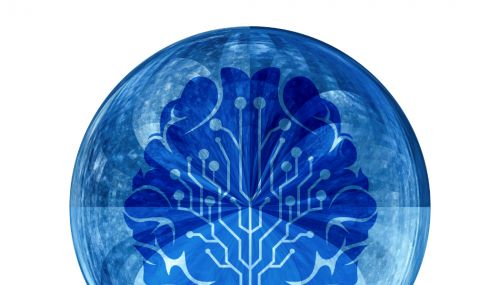 How Intelligent Are Your Integrated Customer Platforms?
How Intelligent Are Your Integrated Customer Platforms?
Posted on June 25, 2025
Enter your email to receive important news and article updates.

